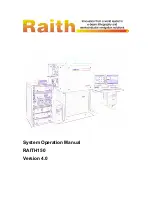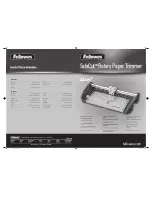
Lake Shore Model 370 AC Resistance Bridge User’s Manual
2.4.5.5
Active Common Mode Reduction
It is common for precision measurement equipment to use a differential input as the first stage of signal conditioning.
The differential input offers high impedance on both input voltage terminals to reduce the effect of common mode
voltage (voltage that acts on both leads at the same time). Common mode voltage can come from many sources including
external noise coupling into the lead wires and the instrument’s own current source. To reduce the effect of common
mode voltage further the Model 370 includes an active common mode reduction circuit. This circuit dynamically adjusts
the operation point of the current source output to minimize the common mode voltage seen at the measurement input.
Active common mode reduction allows the system to operate in environments that would otherwise saturate the
instrument’s differential input amplifiers. The effect of active common mode reduction is most evident when excitation
current is 1 µA or greater but it should be left on most of the time. Active common mode reduction should be turned off
any time a measurement lead is tied to measurement common (shield). The reduction circuit will not operate properly in
this configuration because the symmetry of the measurement is lost. Measurements can be made with one lead grounded
if the active common mode reduction feature is turned off.
2.4.5.6
Matched Impedance Current Source
The Model 370 takes the idea of a differential input one step further with a unique feature in its current source. The two
current source output terminals have the same source impedance, similar to the voltage input terminals of a differential
input that have the same input impedance. The resistor being measured and all noise sources in the environment “see”
the same impedance on both current source leads when looking back into the instrument. The circuit improves the
measurement in two ways. First, the differential input remains truly differential and performs well measuring any value
of resistor. Traditional current sources with different impedance on each lead (one lead grounded) can lessen the
common mode rejection of a differential input especially when measuring large resistors. Second, common mode noise
sources have the same effect on both sides of the resistor being measured ensuring that common mode voltages are not
turned into normal mode voltages (voltages are present between measurement leads). Common mode voltage is rejected
by the differential input but normal mode error voltage is measured along with the desired signal.
2.4.6
Measurement Speed and Filtering
The Model 370 has built in hardware low-pass filter with a time constant of 200 milliseconds. That filter is necessary to
convert the changing output of the phase sensitive detector, operating at 13.7 Hz, to a stable DC signal. The minimum
filtering is sufficient to measure small resistance values with large excitation but that is not the true purpose of the AC
Bridge. As resistance increases and excitation decreases additional filtering and longer time constants are necessary to
maintain good resolution.
Additional filtering is done in the instrument firmware as a linear average. Linear averaging requires more memory than
exponential filter algorithms but it gives the best possible settling time. Exponential filters implemented in firmware can
take several times as long to settle for the same number of filter points. Unfortunately linear filters do not have a well
behaved frequency response. The frequency response of a linear filter has the shape of a damped sine wave rather than
the sloped rolloff of a first order low pass. This can create problems when trying to filter periodic noise that has a
frequency lower than the excitation frequency.
The input hardware settles about 1 second after a large resistance change if no range change is required. When the
firmware filter is turned on, that filter settling time must be added to the hardware settling time to approximate overall
settling. Firmware filter settling time settings are available 1 second to 200 seconds. Please remember that filtering does
not reduce the electrical noise that reaches the resistor and therefore will not reduce self-heating from noise.
Range change requires additional settling because the internal circuits need time to reestablish their operating point. The
hardware settles in 2 to 3 seconds after range change. Settling may take a little longer especially if resistance is very
large or excitation is very low. A change pause can be programmed into the instrument to allow for settling without
disturbing other instrument firmware features. During the pause period features including filter, max/min capture, analog
voltage output calculations and temperature control and error testing are suspended. The pause time can be set from 3 to
60 seconds and must be added to the filter settling time to approximate overall settling after range change. Scan channel
change is similar to range change except the new channel may autorange after a channel change creating a further delay.
The instruments A/D sampling (update) rate is 10 readings per second and all readings are available over computer
interface with an efficiently written program. This rate allows the A/D to capture any resistance changes that are able to
pass through the input hardware. The temperature control loop, analog voltage outputs and max/min capture are updated
with each A/D reading. The display is updated at 2 readings per second.
2-8
Theory of Operation
















































